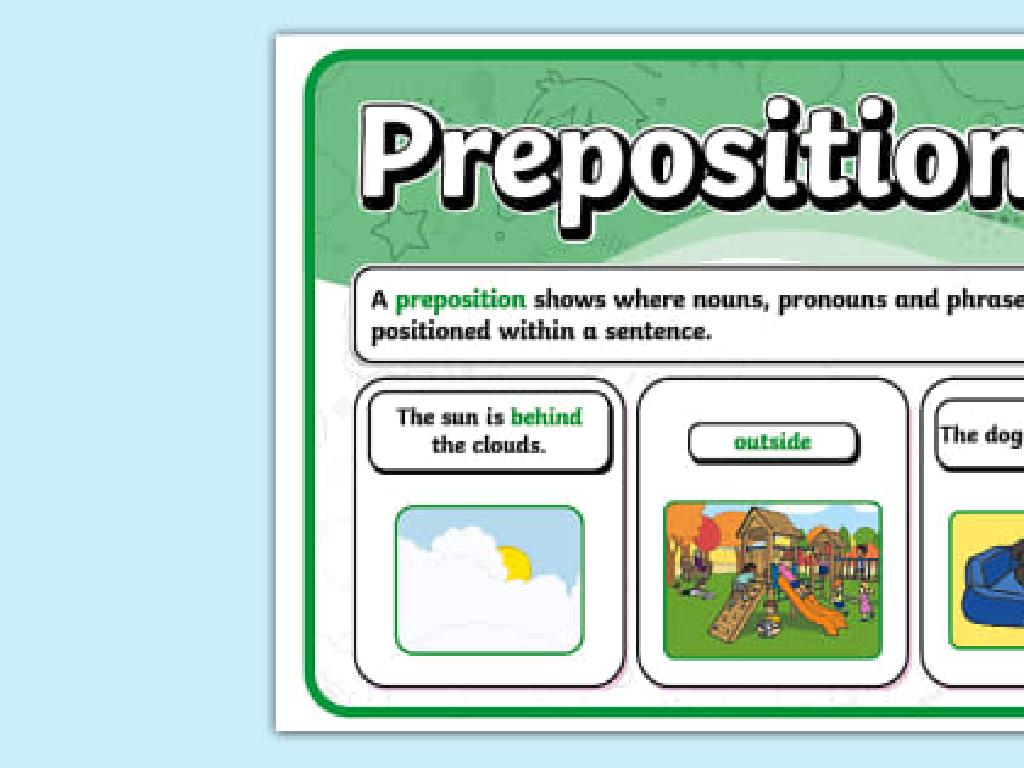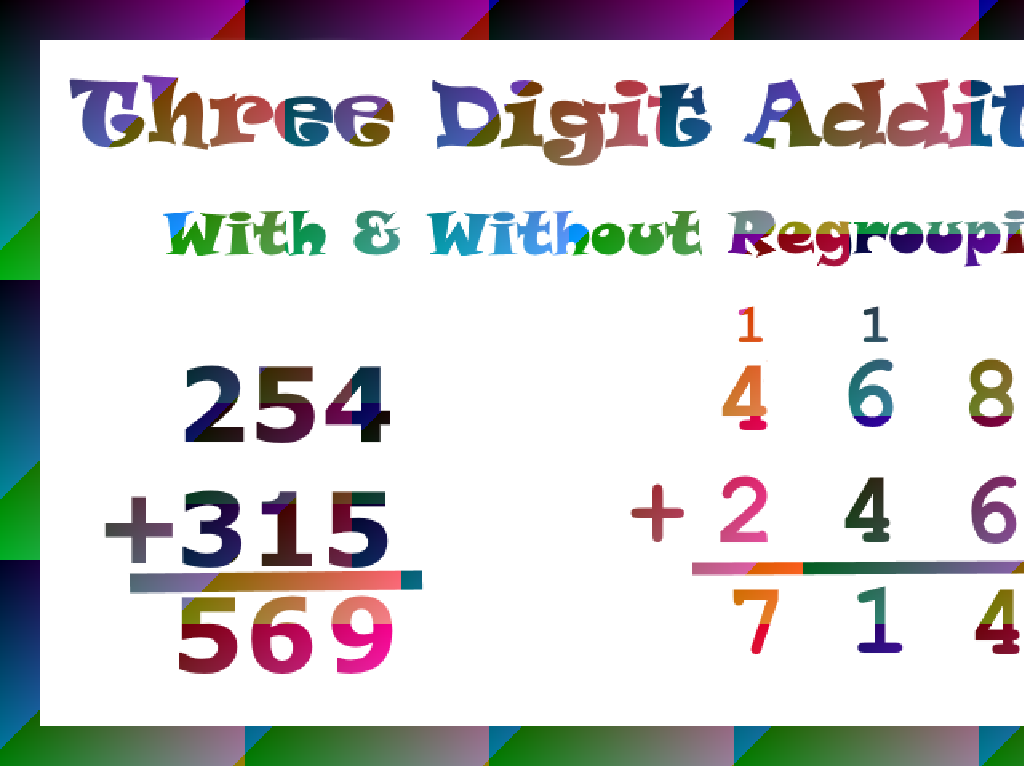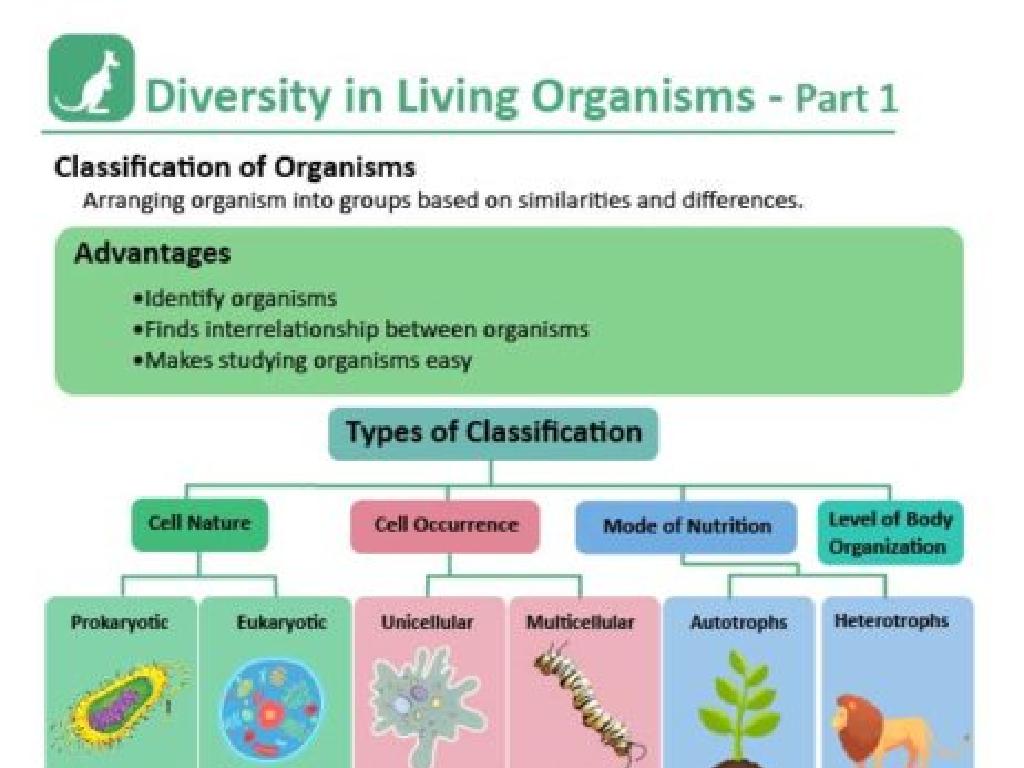Identify And Select Countries Of Africa: Region 4
Subject: Social studies
Grade: Sixth grade
Topic: Africa: Geography
Please LOG IN to download the presentation. Access is available to registered users only.
View More Content
Exploring Africa: Region 4 Geography
– Africa’s diverse landscapes
– What are regions?
– Regions divide the continent into manageable areas for study
– Focus on Region 4
– Learn about the countries, climate, and culture in Region 4
– Significance of Region 4
– Region 4’s unique features contribute to Africa’s overall diversity
|
This slide introduces students to the vast and varied geography of Africa, emphasizing its division into different regions for easier study. Region 4, which includes countries such as Namibia, Botswana, and parts of South Africa, is highlighted to showcase its unique climate, culture, and geographical features. The slide aims to spark curiosity about the region’s deserts, wildlife, and cultural heritage. Encourage students to think about how the geography of a place can influence the lifestyle of its inhabitants. As an activity, students could be asked to research one country within Region 4 and present its geographical and cultural aspects in the next class.
Exploring Africa: Region 4
– What defines Region 4
– Region 4 refers to a specific area within Africa, often grouped by geographical, political, or cultural similarities.
– Locate Region 4 on a map
– Use a map of Africa to point out where Region 4 is situated.
– List of countries in Region 4
– Countries such as Namibia, Botswana, Zimbabwe, and South Africa are part of Region 4.
– Significance of geographical regions
– Understanding regions helps in studying climate, culture, economics, and politics within an area.
|
This slide introduces students to the concept of geographical regions, focusing on Region 4 in Africa. Begin by explaining what a region is and how it can be defined. Show students where Region 4 is located on the African continent using a map. Discuss the countries that are part of this region, highlighting a few key facts about each to provide context. Emphasize the importance of regions in geography as they help to categorize and simplify the study of different areas, making it easier to compare and contrast them. Encourage students to think about what makes Region 4 unique and how it might differ from other regions in Africa.
Physical Geography of Africa: Region 4
– Explore Region 4’s landforms
– Investigate the diverse terrain, including valleys and plateaus
– Rivers, mountains, deserts
– Nile River, Atlas Mountains, Sahara Desert are key features
– Geography’s impact on life
– Climate and resources shape agriculture, settlements
– Discuss human-environment interaction
|
This slide aims to introduce students to the physical geography of Africa’s Region 4, which includes a variety of landforms such as valleys, plateaus, and significant features like the Nile River, Atlas Mountains, and the Sahara Desert. Emphasize how these physical features influence human activities, including agriculture, where people choose to live, and how they adapt to their environment. Encourage students to think about how the availability of water and other resources affects daily life and the development of societies. Use maps to help students visualize the region and discuss how the geography has played a role in historical events, cultural development, and current affairs.
Cultural Overview of Africa: Region 4
– Diversity in Region 4 cultures
– A mosaic of ethnic groups with unique customs
– Languages and traditions
– Multiple languages spoken; rich traditional heritage
– Celebrations across Region 4
– Festivals and ceremonies that mark cultural identity
– Cultural geography explained
– Study of how cultural traits develop and spread
|
This slide aims to give students a glimpse into the rich cultural tapestry of Africa’s Region 4. Emphasize the variety of ethnic groups, languages, and traditions that contribute to the region’s diversity. Highlight how celebrations are a vibrant expression of cultural identity and can vary greatly from one community to another. Explain cultural geography as the study of cultural products and norms and their variations across and relations to spaces and places. Encourage students to explore how geography influences cultural development. Provide examples of cultural practices from specific countries within Region 4 to illustrate the points made.
Economic Activities in Africa: Region 4
– Agriculture’s role in Region 4
– Farming is a key economic activity, with crops like coffee and cocoa.
– Region 4’s natural resources
– Abundant in minerals, oil, and gas, impacting the economy positively.
– Economic challenges faced
– Issues include poverty, infrastructure, and political instability.
– Opportunities for growth
– Potential in tourism, technology, and renewable energy sectors.
|
This slide aims to provide an overview of the economic activities in Africa’s Region 4, focusing on agriculture, natural resources, and the economic landscape. Emphasize the importance of agriculture as a livelihood for many and discuss the main crops grown in the region. Highlight the wealth of natural resources such as minerals, oil, and gas, and their contributions to the economy. Address the challenges that the region faces, including poverty, inadequate infrastructure, and political issues that can hinder economic development. Lastly, discuss the opportunities for growth, such as the expanding tourism industry, the potential for technological advancement, and the exploration of renewable energy sources. Encourage students to think critically about how these factors interplay and affect the lives of the people in Region 4.
Understanding Political Borders in Africa
– What are political borders?
– Lines defining a state’s territory and sovereignty
– Historical changes in borders
– Africa’s borders have shifted due to colonization, wars, and treaties
– Borders’ impact on daily life
– Borders can affect trade, movement, and resource access
– Case study: Africa’s Region 4
– Explore how Region 4’s borders have shaped its countries
|
This slide introduces students to the concept of political borders, emphasizing their importance in defining a country’s territory and sovereignty. Highlight how Africa’s borders have been particularly affected by historical events such as colonization and conflict, leading to changes over time. Discuss the real-world implications of political borders on people’s lives, including how they can influence economic trade, freedom of movement, and access to natural resources. Use Africa’s Region 4 as a case study to illustrate these points, encouraging students to think critically about the impact of borders on the countries within this region. Provide examples from Region 4 to show how borders can shape national identity, cultural exchange, and regional cooperation.
Class Activity: Exploring Africa’s Region 4
– Label Region 4 countries on a map
– Mark major physical features
– Identify features like rivers, mountains, deserts
– Share facts about each country
– Find an interesting fact about the countries you label
– Engage in class discussion
|
This activity is designed to help students learn about the geography of Africa’s Region 4 through an interactive mapping exercise. Provide students with blank maps of Africa’s Region 4 and a list of countries and major physical features to be labeled. Encourage them to use atlases or digital resources to accurately place each country and feature. After labeling, students should research and note one interesting fact about each country to share with the class. This could include cultural, historical, or geographical information. Facilitate a discussion where students can share their findings and reflect on the diversity and characteristics of Region 4. Possible activities for different students could include drawing the flags of the countries, comparing the sizes of the countries, or researching the capital cities.
Wrapping Up: Africa’s Region 4 Geography
– Recap of Region 4’s geography
– Significance of geographic knowledge
– Understanding geography connects us with different cultures and environments.
– Upcoming: Climate & Weather Patterns
– Get ready to explore how Africa’s climate varies across different regions.
– Reflect on today’s discoveries
– Think about how geography influences daily life and culture in Region 4.
|
As we conclude today’s lesson, it’s important to review the key points we’ve covered about Region 4 of Africa. Emphasize the value of geographic literacy in fostering global awareness and cultural sensitivity. Prepare the students for the next lesson by hinting at the diverse climates and weather patterns they’ll learn about, which play a crucial role in the lives of the people in Africa. Encourage students to reflect on what they’ve learned today and how it might apply to their understanding of the world. Ask them to consider how geography can affect cultural practices, economies, and daily life in the regions they’ve studied.






